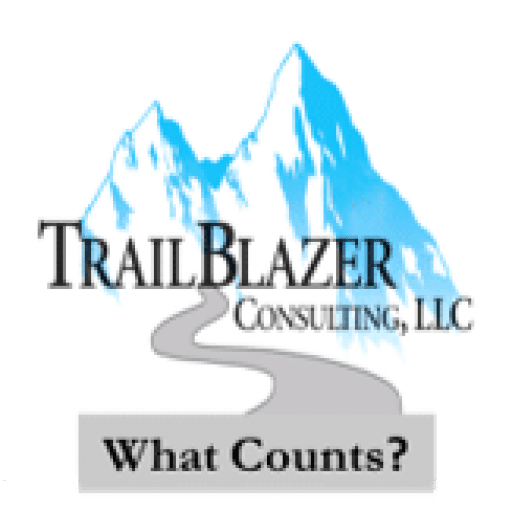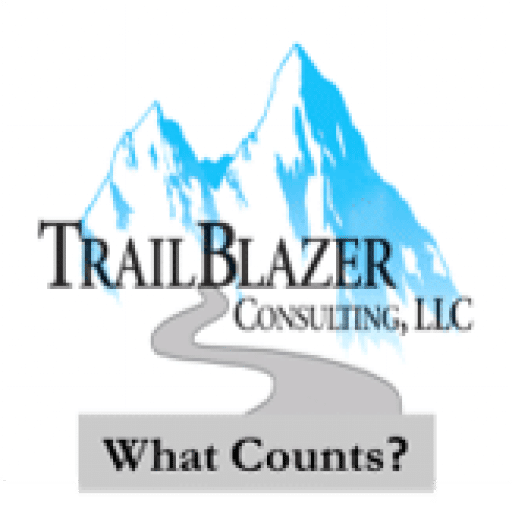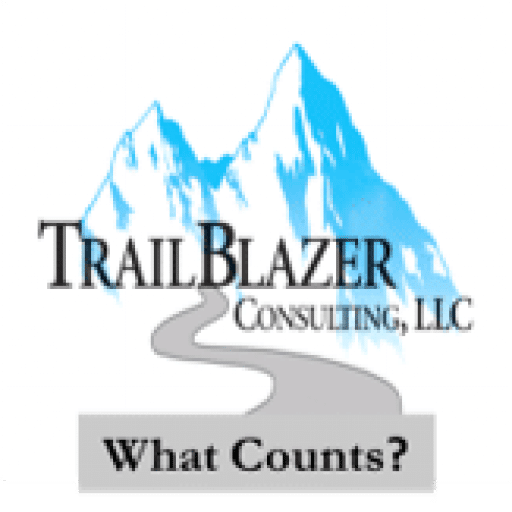Episode Transcript
[00:00:01] Speaker A: Hello.
[00:00:01] Speaker B: Thank you for joining us. This is what counts, a podcast created by Trailblazer Consulting. Here we highlight proven solutions developed through our experience working with companies across various industries. And we talk about how you can apply these solutions to your company. We share our experience solving information management challenges, like creating and implementing a records retention schedule, creating an asset data hierarchy, or helping with email management. This is Lee, and in this episode, Moore and I will discuss the elements of contract lifecycle management implementation.
[00:00:34] Speaker A: Hi there, everyone. And hi there to you, too, Lee. Hello.
All right, it's pop quiz time. Tell me what elements you think go into an implementation.
[00:00:46] Speaker B: Okay, this is a loaded question and you know it. So you could start from anywhere, but a business case is a good idea to start with. And when you have a business case, the reasons why you need to implement, you need to be able to present that to your leadership. So you need an executive sponsor to bring that to leadership. So to me, those are two different things, right? Keeping going. Then, once the executive sponsor and leadership all agree that the business case is a good idea, now you pick a project manager and you say go.
That was the old way.
We learned that from one of our companies that we were at pick a project manager, and now it's all their problem to go.
But continuing on with some of the items, I think if you have a project manager now, you're discussing your core team. That's necessary. You're setting up some sort of governance structure for this piece because you need to be able to get out to the masses to collect requirements, to collect as is processes. How are you doing contract management now so that you can fix it and move to the two b process after that, we had some episodes on pilot versus proof of concept, so I might as well throw that in there in this piece. Data cleanup, migration, that's probably a whole section unto itself. But this is all part of your project plan and the project management aspect. Testing go live or no go decision, that's kind of the last thing. So I kind of threw out a whole bunch of things there. Which one stuck?
[00:02:29] Speaker A: Well, I think they're all good. It's so interesting that you started on the business case, and I actually wasn't thinking about that, but that's why we're both here.
So what I noticed about all the things you mentioned is that we've talked about these same things a few times over the course of our podcast. Picking a sponsor, picking a champion. Hugely important, the governance and the core team, who's going to keep this thing moving. And we talked a lot about that when we were talking about doing assessments and who are your stakeholders? Who's your core team?
To me, the reason that we keep coming back to that is because information management is all about how people interact with information.
And as business continues to become more sophisticated, more advanced, and more information driven, the way people interact with information is really important. So we're looking at contracts now because this is how, like we talked about in our last episode, this is how businesses quantify their cost and their revenue. It's all related to contracts of one type or another. So when I was thinking about this, first of all, it just made me laugh to say I was going to give you a pop quiz. But second, I thought, okay, there are so many things, all the things you mentioned about implementation, every single one of them that you mentioned, plus more, and it can feel overwhelming when you start to think about it. And those poor pms that used to just be like, here you go, do it.
They struggled for good reason.
So then I was thinking about, all right, when you're overwhelmed, what do you do? You go back to the basics, or you throw up your hands and cry, but back to the basics. So very early on in our podcast, when we spent a lot of time talking about how to do an assessment and how to plan for projects that you identify out of your assessment, what are the priorities, what are the high risks, and then how do you actually start tackling them? We introduced the idea of Trailblazer's information design framework. And what I realized is every time we start a contract management implementation project, we're looking at that framework and we're dividing up our initial project plan according to that framework. And it does start with the sponsor and the business case, even if I didn't think about it, because at the top of our framework is governance, and that's about who's in charge here, who has the authority to tell us it's okay to go ahead, who's going to make decisions? And one of the decisions is, do we need this? What problem are we trying to solve? You said find out the as is processes and then how are you going to fix them, which is real. And we talked to a client this week, potential client this week, though, about they have a system and nobody uses it and they all hate it. And so that's a real problem. So again, thinking about the governance piece, that's where we always look at the people part and change management, organization, change management. And it starts with bringing people into the requirements part, asking them what do they need in a contract management solution. And it is their as is process, although we don't do that formally in the requirement stage usually, but it is.
How are you doing this today? What's working for you? What isn't working for you? What are the pain points that we're trying to fix in this case?
And getting those people to tell you what they want and what they need is the first step in organization change, getting people to move forward in the new direction. If you just throw a system at them, they're not going to like it. Almost guaranteed there are no systems that people just love when you don't include them in the decision process.
So top of our framework governance, and it's all about people and decision making. And that is where I would see totally, you're right, the business case is one of the first things and we've worked with.
[00:06:47] Speaker B: Sorry, but I think along the lines of the governance, right. Are the goals, the objectives? And you said it kind of in your conversation there, goals, objectives, key performance indicators, what are the measurements that you need to hit? What are the success factors? I mean, all of that's really wrapped up in that whole let's get that governance group together and decide we're going forward with this.
[00:07:12] Speaker A: Yes, and documenting everything, because if you don't write it down, you will forget there are too many pieces here and you want to be able to look back at the after go live and say, did we do everything we said we were going to do? Does the system meet all the needs that we had identified for it and all the goals that we'd set out? And if it doesn't, then did we make decisions along the way that we also documented and the governance team agreed to and we had the stakeholders input? Did we make those decisions along the way and we expected not to hit those goals or to meet some different goals? Or are we surprised, disappointed and confused because we just didn't address those things? And that is all about good project management.
Again, that fits in the governance piece.
The bottom of our framework has infrastructure, and that's really about platform. And it used to be when we first developed this framework, there was a lot of paper in that platform, like where are you keeping contracts? And certainly our clients still have contracts in paper. There's a lot of offsite storage vendors out there holding a lot of contract documents, but in most cases, people also are scanning contracts or they may actually be creating them electronically, routing them for electronic signature, storing them electronically, but also printing something out and sending it to offsite storage. So that infrastructure question is important. Do these things need to be in paper? Do they need to be in electronic form in only the final state, the signed version? Or are we looking for a lifecycle approach where we're storing templates and smart clauses or a clause library and storing the whole process electronically, managing the whole process electronically, because those are going to drive you to some requirements, some technical requirements for your solution.
You also want to consider, in this case, in this infrastructure space, are you looking at a cloud solution or an on premises solution which really is about your environment? There's no right or wrong answer there. Just which one do you want? So the middle of our framework is where the meat is and we have policy, process, data, content and applications. So policy, what are the rules that you need to enforce around your contract management?
What levels of authority, signing authority, delegation of authority? What regulatory requirements do you have in terms of your ability to make contracts? Is your entire business governed by the same regulations, or do you have some pieces of it that are regulated and some pieces that aren't? That happens a lot in the energy industry process. You mentioned the as is and documenting the two B's. We want systems that will support a workflow. Typically, if you're going to look for a big solution, you want it to have workflow that can manage all the different steps and enforce your policies at the same time. If you're not going for a big solution, you still need to understand what process are you going to follow and how are you going to enforce your policies manually. What kind of discipline and checks and balances are you going to put in place?
I'm going to skip data and content for 1 second and go to applications because that's a little easier because this is where you get to. Okay, we've got requirements, functional requirements, technical requirements, policy and process requirements. What software solution is out there that can do this for us if we're going to pick a software solution?
Key here when you're talking about contract management is you're talking about contract management, contract lifecycle management, not just document management. You don't want to just manage the documents that happen to be contracts. You want to manage that full lifecycle.
Okay, so I can't avoid it any longer. We're at the data and content piece and you mentioned it. You said it was a whole thing unto itself. And it for sure is, because in most cases that we've seen, I'm going to go with every case that we've seen for any clients, they start new.
[00:11:35] Speaker B: And fresh and forget about all the old stuff.
[00:11:38] Speaker A: They want to say for sure want to, but they have contracts everywhere across the company because you might have supply chain people who are doing sort of routine goods and services procurement, and they are managing stuff sometimes in the financial system, sometimes they're managing it in spreadsheets and word documents and pdfs because they don't have that many and they can just handle it. Sometimes they've got a central place inside of procurement. Sometimes every procurement officer has their own store because they are working with different parts of the organization, geographically or functionally.
And that set of contracts is kind of the most straightforward because then you get to the customer end, the business side. You might have a CRM tool that has a rudimentary sort of sales contract functions built into it, and you end up storing some contracts there, but then some of them are harder and you can't really do it in that system. So legal starts to handle those and they end up with a pile somewhere. Legal is really good at a pile of paper somewhere, but even if it's not paper, they probably also have an electronic version. You also start getting a lot of red line versions sent back and forth via email between your in house council and outside council or the other party's council. So your stuff is everywhere. So step one is when you're deciding on your scope and you're talking to your sponsor and your core team, what contracts in your company are you covering with this new solution? Is it going to be all of them? Is it going to be some of them? Are you going to start small? You mentioned pilot or proof of concept. Are we going to start small and build up, or are we going for the whole thing? So those are questions you got to ask yourself then, okay, we're going to do it all, or we're going to do this piece. What's in this piece?
How is it organized? Where is it sitting?
Do we have data or do we only have documents? Do we have paper documents or electronic documents? Do we have native electronic files, like word documents with red lines and versioning, or do we just have signed documents? Do we only have one final signed contract or do we also have amendments? Have we scanned things that are like contract, plus all the exhibits and attachments all in one file, or are they separate files? So that interrogation of your existing collection, your legacy collection, is a huge piece of work, then you got to figure out how to get all that into the new system. And the new system, if you are going to pick a software solution, is probably going to have a contract record, which is a lot of metadata and other data about the contents of your contract so that you can do tracking and notifications and workflows and calculations and things. And you will have the documents. You won't just have the document and a file name. So there's that understanding of the legacy and then planning for the data conversion and migration.
And finally in the application section, I know I skipped over and talked about that briefly in terms of picking something, but of course, the implementation planning has to go into how do we configure that application to make it work for you? So that's a very high level view. But those are the elements and they do align with the trailblazer information design framework.
[00:15:20] Speaker B: Sorry, go ahead.
[00:15:21] Speaker A: Which is available. Sorry.
[00:15:24] Speaker B: Excellent. So just to repeat those again, governance is at the top, infrastructure is at the bottom, and the pillars are policy, process, data content together and applications.
[00:15:37] Speaker A: Yes.
All right, that's enough for today. I think we're going to spend some more time going into each one of these about planning and implementation, but I think that's a good stopping point.
[00:15:48] Speaker B: If you have any questions, please send us an email at info at Trailblazer us or look us up on the web at WW trailblazer us. Thank you for listening and please tune into our next episode. Also, if you like this episode, please be a champion. Share it with people in your social media network. As always, we appreciate you, the listeners. Special thanks goes to Jason Blake, who created our music.
[00:16:12] Speaker A: Thanks everyone.




